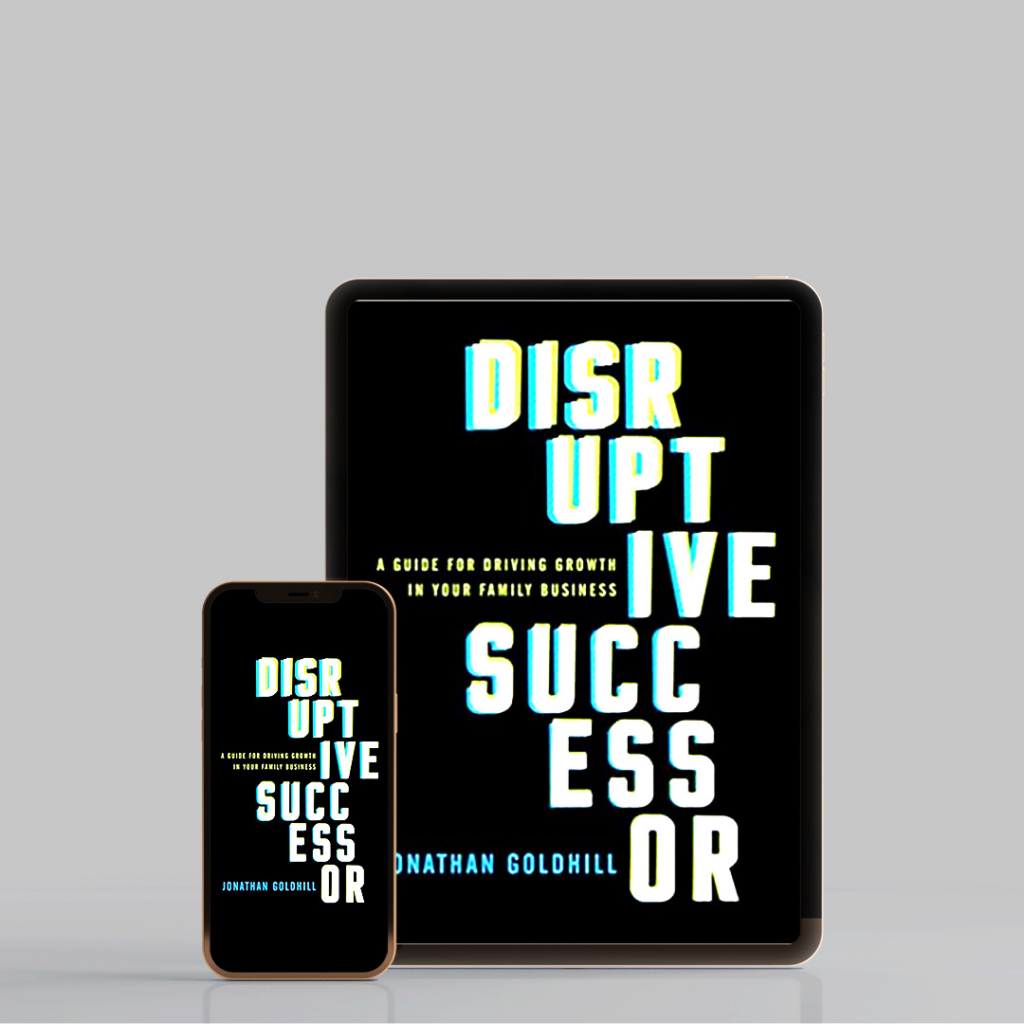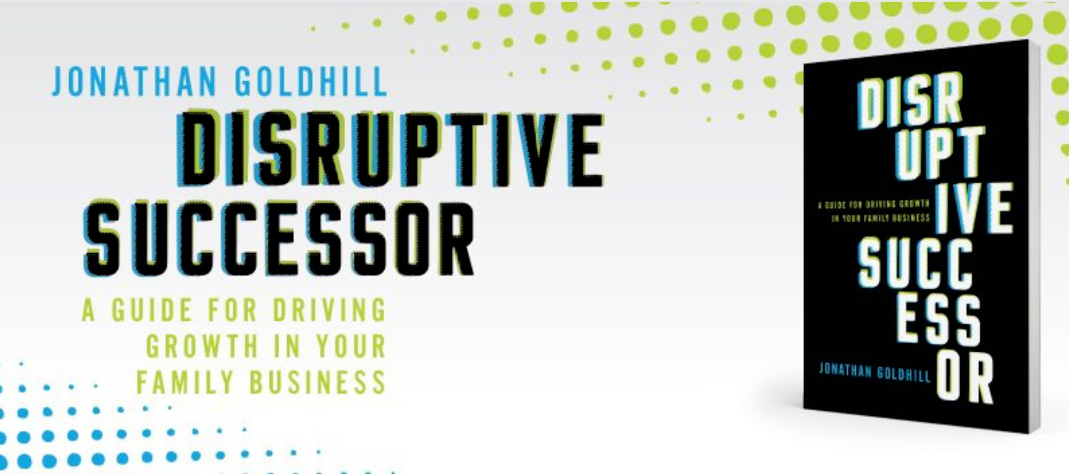By Jonathan Goldhill
Inheriting a family business is both a significant opportunity and a formidable challenge. For the successor, the task is not just to maintain the status quo but to foster growth and steer the business toward greater heights.
Disruptive Successor: A Guide to Driving Growth in Your Family Business provides a comprehensive roadmap for heirs to effectively lead their family businesses into a new era of success. This article explores the key strategies and insights from the book, offering a guide for heirs to grow their inherited businesses.
Understanding the Role of a Disruptive Successor
I define a “disruptive successor” as an individual who brings innovative thinking and transformative leadership to a family business. This role involves challenging traditional practices, introducing new ideas, and driving the business forward in a rapidly changing market landscape.
Embrace Change and Innovation
One of the central themes in my book is the importance of embracing change and fostering a culture of innovation. For heirs looking to grow the family business, this involves:
Adopting New Technologies: Integrate the latest technologies to streamline operations, improve efficiency, and enhance customer experiences. This can include everything from automation and AI to digital marketing and e-commerce platforms.
Encouraging Creativity: Create an environment where creativity is encouraged and new ideas are welcomed. This can be achieved through regular brainstorming sessions, innovation workshops, and by fostering a culture that celebrates experimentation and learning from failure.
Building on the Legacy
While innovation is crucial, it’s equally important to build on the existing legacy of the family business. I advise successors to:
Understand the History: Gain a deep understanding of the business’s history, values, and the factors that have contributed to its success. This knowledge can serve as a foundation for future growth.
Respect Established Relationships: Maintain and strengthen relationships with long-standing customers, suppliers, and employees. These relationships are valuable assets that can support the business during times of change.
Developing a Strategic Vision
A clear and compelling vision is essential for guiding the business toward sustained growth. I recommend:
Setting Long-Term Goals: Define long-term goals that align with the family’s values and the business’s strengths. This provides a clear direction and helps in making strategic decisions.
Creating a Strategic Plan: Develop a comprehensive strategic plan that outlines the steps needed to achieve the long-term goals. This plan should include market analysis, competitive positioning, financial projections, and a roadmap for implementation.

Strengthening Leadership Skills
Effective leadership is critical for driving growth and managing the complexities of a family business. I emphasize the importance of:
Continuous Learning: Invest in personal development through courses, workshops, and mentorship. This helps in acquiring new skills and staying updated with industry trends.
Building a Strong Team: Surround yourself with a talented and diverse team. Delegate responsibilities and empower team members to take ownership of their roles.
Effective Communication: Foster open and transparent communication within the business. This helps in building trust, resolving conflicts, and ensuring everyone is aligned with the business’s vision and goals.
Financial Acumen
Growing a business requires sound financial management. I advise successors to:
Understand Financial Metrics: Gain a strong understanding of key financial metrics and use them to make informed decisions. This includes cash flow management, profit margins, and return on investment.
Explore Funding Options: Look for funding options to support growth initiatives. This can include reinvesting profits, securing loans, or seeking external investors.
Implement Financial Controls: Establish robust financial controls to monitor expenses, manage risks, and ensure the business remains financially healthy.
Embracing a Customer-Centric Approach
A customer-centric approach is crucial for driving growth and staying competitive. I suggest:
Understanding Customer Needs: Regularly gather feedback and insights from customers to understand their needs and preferences. This information can be used to improve products and services.
Enhancing Customer Experience: Focus on delivering exceptional customer experiences at every touchpoint. This can help build customer loyalty and attract new customers.
Managing Change
Leading a business through change can be challenging, especially when dealing with resistance from within the family or the organization. I provide the following advice:
Communicate the Vision: Clearly communicate the vision and the reasons for change to all stakeholders. This helps you gain their support and reduce resistance.
Lead by Example: Demonstrate the desired behaviors and attitudes through your actions. This sets a positive example for others to follow.
Be Patient and Persistent: Change takes time and persistence. Be patient, stay focused on the long-term goals, and continuously work towards achieving them.
Conclusion
Becoming a disruptive successor is about balancing innovation with tradition and ambition with careful planning. My book “Disruptive Successor” offers invaluable insights and practical strategies for heirs looking to grow their family businesses. By embracing change, building on the legacy, developing a strategic vision, strengthening leadership skills, managing finances effectively, adopting a customer-centric approach, and managing change, successors can drive their businesses to new heights and secure their place in an evolving market. Ultimately, the goal is to create a resilient, forward-thinking company that honors its past while boldly stepping into the future.
Order your copy of Disruptive Successor today.

